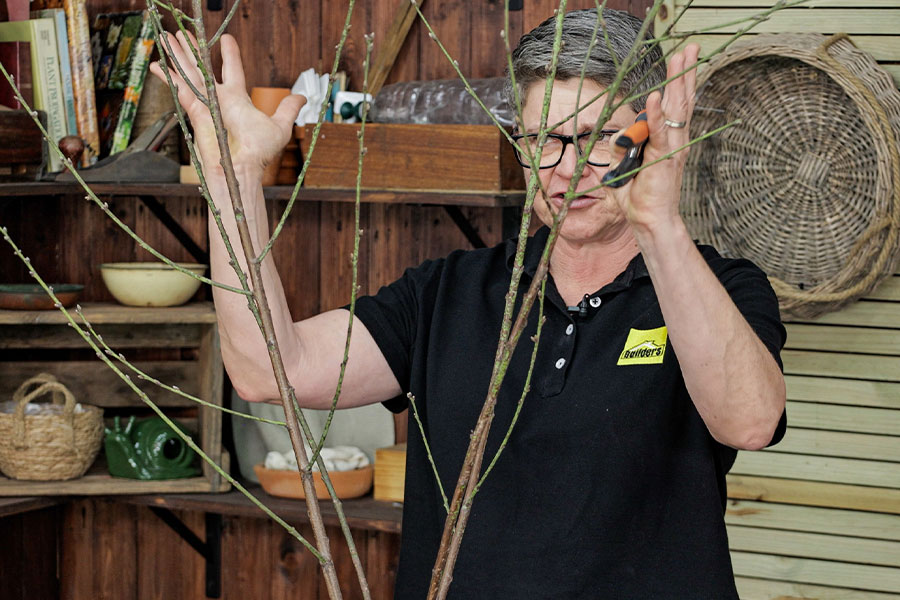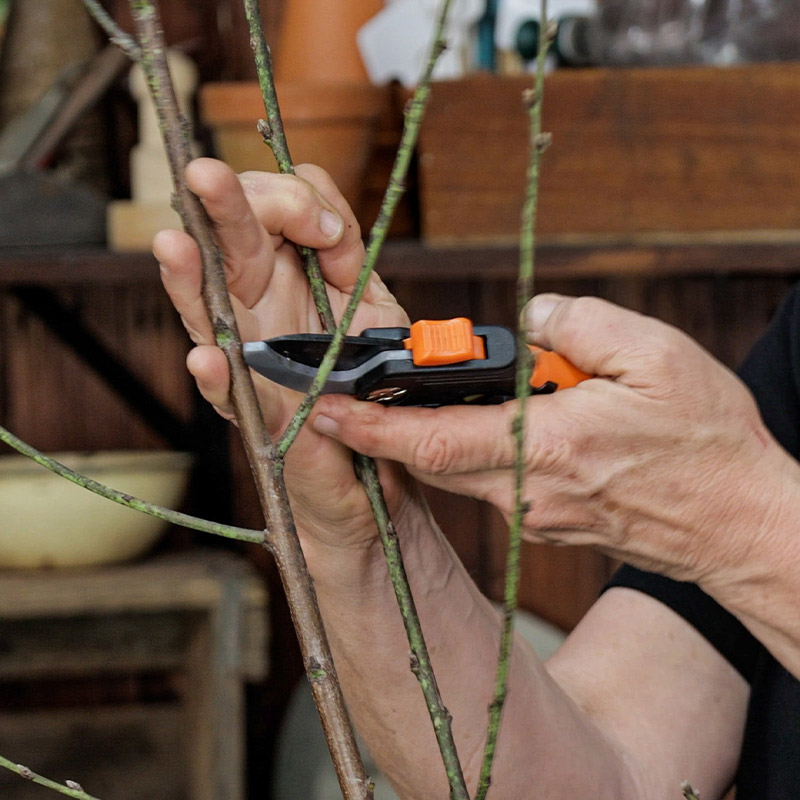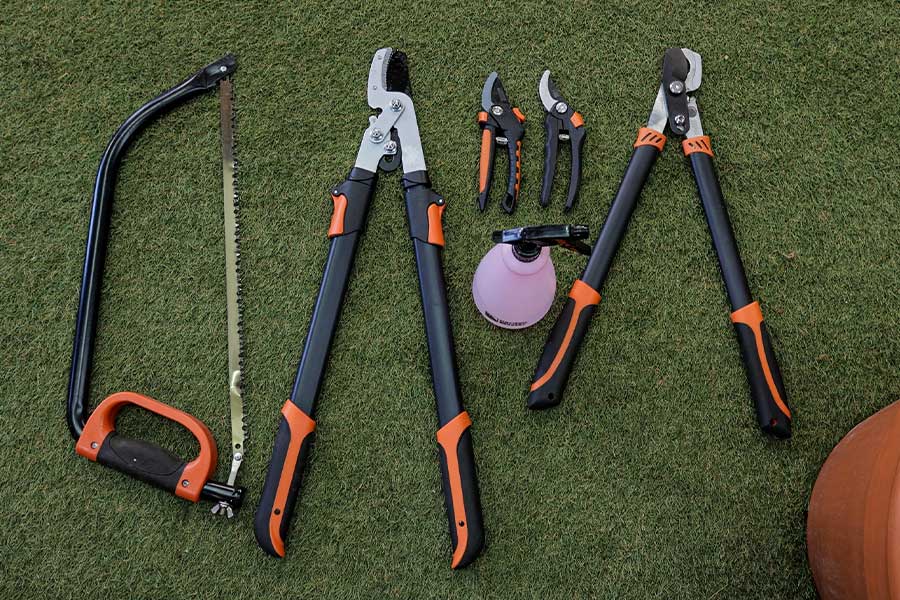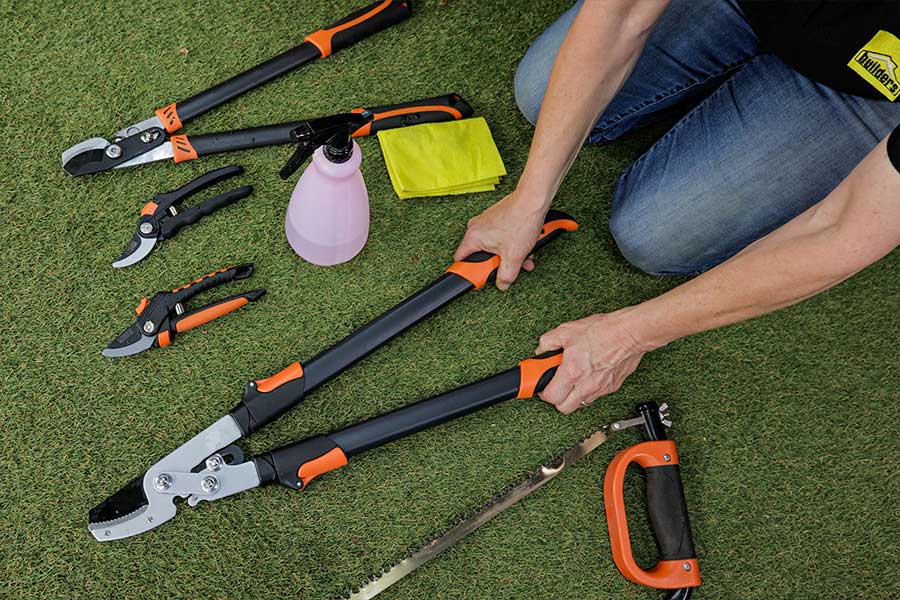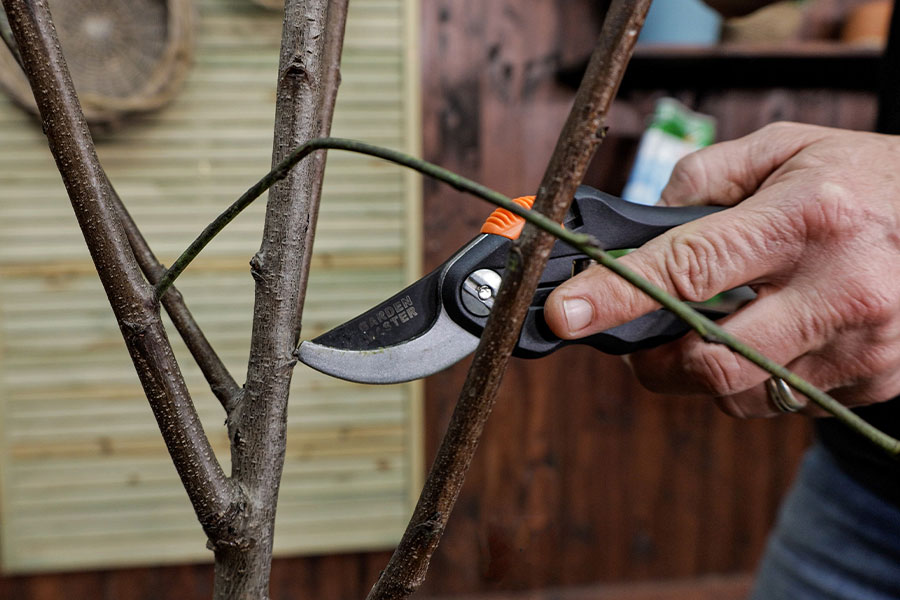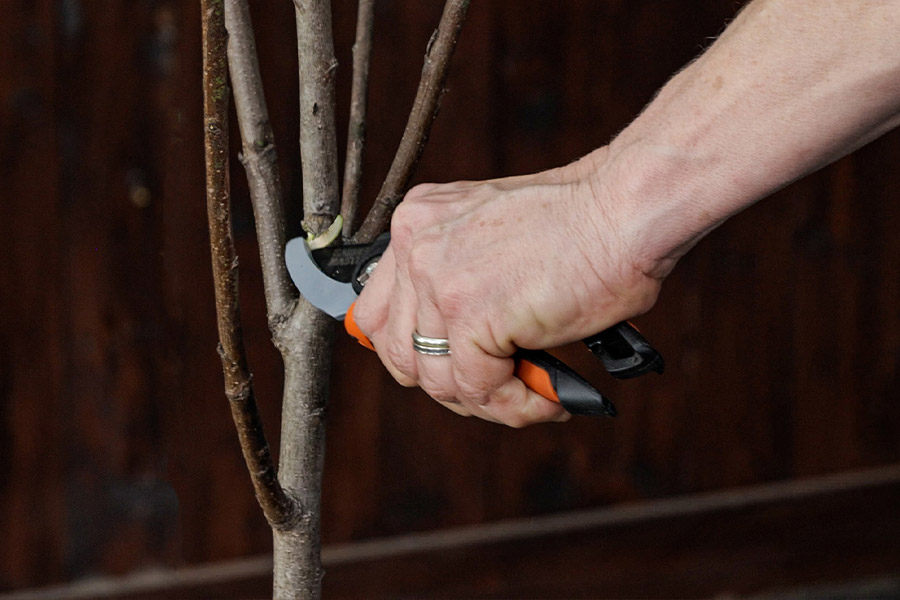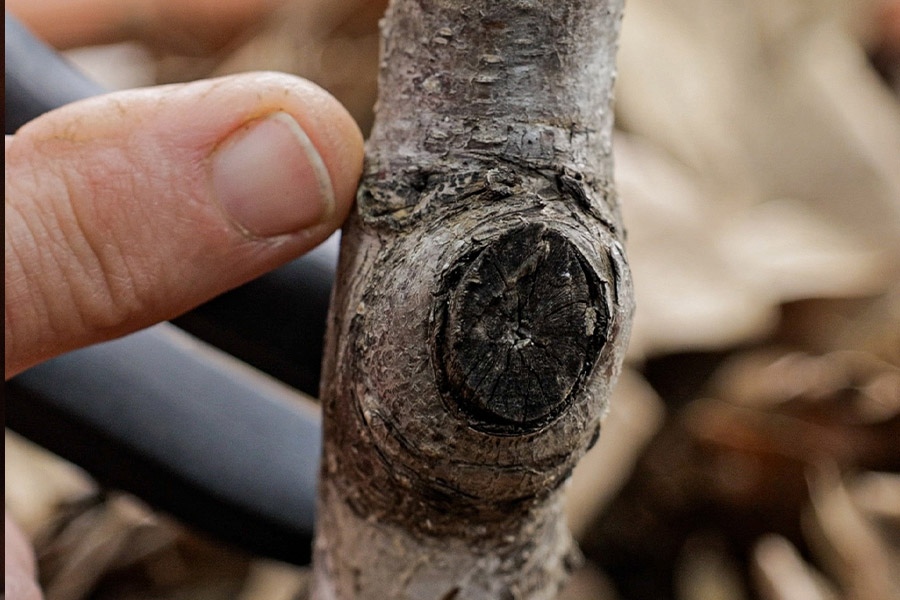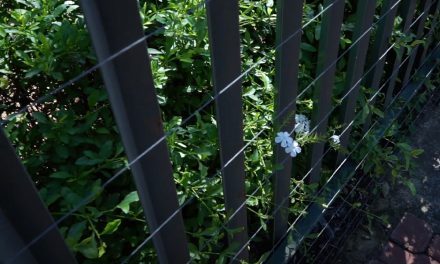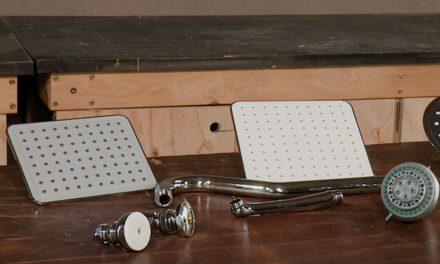Pruning deciduous fruit trees not only makes them look better, but also leads to better yields of tasty fruit.
Deciduous fruit trees include some of our favourites – stone fruit. Stone fruit includes apricots, peaches, nectarines and plums, while other deciduous trees are pome fruit (apples and pears) as well as some nuts.
Pruning tools
The first step in pruning is to gather the correct tools of the trade: loppers, secateurs, a garden saw and a misting spray bottle. When choosing loppers, remember that bypass loppers are good for clean cuts on medium-thickness (up to 3 cm) branches, while anvil loppers can cut thicker, harder branches. The right tool for the job, as they say…
A good pair of secateurs is vital too. They are designed for finer work and produce a clean cut on thinner branches.
A garden saw isn’t always necessary, but if you’ve neglected your tree and it’s got out of hand, a saw will allow you get rid of the branches that are too thick for even anvil loppers.
And the spray bottle? Well, before you even think of pruning your fruit tree you need to disinfect your tools. To do this, pop some surgical spirits in a spray bottle and give the blades of each tool a few squirts of the spirits and then wipe them down. If you’re pruning more than one tree, it’s also a good idea to disinfect the tools between plants too, to prevent spreading diseases and fungal infections from one to the other.
Pruning steps
Pruning is vital for the first three years and while this may sound over the top, if you don’t prune while the tree is young you will be disappointed with the shape of your tree in the future. With a fruit tree, we want the final shape to be like a vase.
The first cut is called the ‘hard head cut’ and it should be done on the tree as young as possible. This cut is made to the main leader branch and it will force a new, young shoot to grow out from below the cut. Cut off one third of the leader branch, leaving two thirds of the length from the graft. The hard head cut encourages good root development, vigorous growth and good branching in spring.
The next step is to remove all the spindly growth, which lets more light in to encourage better, healthier growth. It also improves air movement, which leads to more flowers, which in turn leads to more fruit!
In gardening we always speak about using odd numbers – three or five – and this is also true in pruning. When pruning, leave an odd number of strong main leaders, removing the weakest branches. Once that’s done, cut half of each leader off, making the cut just above an outward-facing bud. Remember to cut at a 45° angle. Choosing an outward-facing bud ensures that the new growth is away from the centre of the plant, resulting in a better final shape.
Your tree will also appreciate watering and feeding, whether it’s in a pot or the ground. The right fertiliser is something high in potassium (N), such as Wonder Fruit and Flower organic fertiliser, to encourage good flowering and fruiting.
Everything you need to feed and prune your deciduous fruit tree is available at Builders, both in-store and online at builders.co.za.


